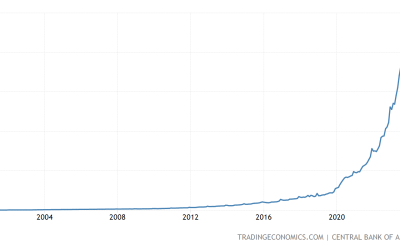No matter who wins this year’s presidential election, believers in monetary freedom will have their work cut out for them.
A newly-elected president Trump will quickly turn from making the Fed a scapegoat for his own campaigns’ tribulations to blaming it for his economic policy failures — starting with the equities market nose dive that’s likely to follow his surprise victory. But instead of continuing to rail against the Fed’s supposedly easy policy stance, you can bet that president-elect Trump would soon be blaming it for keeping money too tight.
In any event, a newly-elected Trump administration, through its unveiled hostility toward the Fed, could not fail to make that already “political” institution even more so, for the Fed knows very well that, if it wants to preserve its vaunted independence, it had better heed the administrations’ wishes. That’s what former Fed Chairman William McChesney Martin, who understood the true nature of the Fed’s independence better than anyone, meant when he explained that the Fed was independent, not “from,” but “within,” the government.
And if it doesn’t? Then at the very least we can expect President Trump to make life very unpleasant for Chair Yellen, in the hope of making her resign before the end of her term in January 2018. And even if she resists, we can expect to have a Trump-appointed Fed chair in place for at least half of his term. If you think that might be an improvement, then presumably you believe that Trump is a better judge of monetary policy experts than he is of economic policy experts generally.
In any event, it is another Clinton presidency that champions of monetary freedom are most likely to have to contend with. And what will that mean? Although the Fed would be bound to accommodate her own administration’s wishes to some extent, Clinton’s championing of Fed independence during her campaign would at least make it necessary for her administration to proceed relatively gingerly in trying to sway its conduct. But while the Clinton administration is unlikely to influence Fed policy directly, it can be expected to do so indirectly, in the name of “diversity.”
In fact, as our own Mark Calabria has written, however much the Fed may suffer from a lack of optical diversity, and especially diversity of gender and race, it suffers more from a lack of diversity of ideas, that is, from an excess of group-think. And it suffers from group-think not because its leaders are mainly white, or mainly male, or even mainly bankers, but because the most influential ones are mainly PhD economists from the same handful of mainly Ivy-League universities. It’s easy for such economists to dominate discussions of policy matters rendered increasingly arcane by their own past efforts, leaving little for others to do but hope that they know what they’re talking about.
Diversity reform of the sort that Clinton seems likely to push is unlikely to overcome such group-think. But that doesn’t mean that it can’t serve as a cloak packing the Fed with persons subservient to the administration — I mean, even more subservient than ordinary bureaucratic survival instincts require. And such abuse of any diversity mandate is something fans of sound monetary policy will have to be prepared to combat. For starters, they would be wise to start thinking of potential, diversity-enhancing persons who actually have a good grasp of what it takes to have a sound monetary system.
Then there’s Glass-Steagall. So far Clinton has refused to yield to popular and misplaced pressure to restore parts of the Depression-era banking law that were repealed by Clinton 42 in the 1999 Gramm-Leach-Bliley Act — and which had nothing to do with the crisis (as Bill Clinton correctly pointed out in supporting his wife’s position). But thanks to Wikileaks we know that candidate Clinton came very close to yielding to Elizabeth Warren and other progressive Democrats to restore the old Glass-Steagall provisions; consequently there is some risk that she’ll be persuaded to reconsider her position once in office.
Needless to say, owing to partisan gridlock, a Clinton Presidency threatens those legislative initiatives favoring greater monetary freedom that have been wending their way through Congress recently, including the FORM Act and the Financial CHOICE Act.
But Clinton’s most obvious threat to monetary freedom consists of her resolve, not only to retain, but to reinforce, Dodd-Frank’s encroachments upon that freedom. Evidently candidate Clinton is less interested in what Dodd-Frank has actually accomplished than in what it pretends to accomplish. We can only hope that President Clinton can be persuaded to take reality more seriously. At the very least, one hopes she can be persuaded that so far as small banks are concerned Dodd-Frank’s influence runs entirely counter to her proclaimed desire to “cut red tape to streamline the process of starting a small business” and to “unlock” non-bank small businesses access to capital.
As for Clinton’s call for a reform that would allow the government to break-up banks deemed “too large and risky to be managed effectively,” how should lovers of financial freedom respond? That depends, in part, on the extent to which they regard existing financial behemoths as so many Frankenstein monsters given life by past government guarantees.
The sad reality is that the battle for monetary freedom has for some time now taken the form of a rearguard action, aimed at resisting as much as possible ever-increasing government incursions into an ever-shrinking realm of financial choice. The election’s outcome, whatever it may be, won’t change this. Instead, it will make it all the more necessary for those of us who recognize the virtues of monetary and financial freedom to rise to the defense of those pockets of financial liberty that we still hold, even as we renew our struggle to recover ground already lost.
This post first appeared first on Alt-M.




